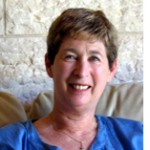By Dorothea Shefer-Vanson

MEVASSERET ZION, Israel –On 9th November 2014, on the very same day that Berliners and others were celebrating the twenty-fifth anniversary of the fall of the wall that had divided their city in two, Jews were marking the seventy-sixth anniversary of the night on which Nazis all over Germany destroyed and vandalized over one thousand synagogues and prayer-rooms, invaded Jewish homes, arrested thousands of Jewish men, and demolished Jewish-owned shops and businesses.
This year, in addition to the customary ceremonies, attended by a dwindling number of survivors of what is known as Kristallnacht, the Night of Broken Glass, or Pogrom Night, the occasion was marked by an evening of lectures about that event and the history of the destruction of Jewish communities in Germany. It also marked the official launch of the two volumes entitled ‘Pogrom Night, 1938,’ commemorating all the synagogues and communities of Germany that were destroyed on that date.
The first speaker of the evening, Professor Israel Rosensohn, focused on the attacks on the Jewish communities of Worms (Wormaiser) and other towns in the Rhineland in 1096, as the masses who had rallied for the First Crusade in order to set out for the Holy Land and rid it of the Muslims and Jews there, decided to start off by massacring the Jewish population that was closer at hand. Stories and legends abound of the atrocities committed at that time, including the suicide of Jews who had first killed the members of their family rather than fall into the hands of the Christian mob. Then, as on other occasions, the wider non-Jewish population stood by and did not intervene.
The Nazis regarded the Pogrom Night of November 1938 as a test case to see how the general populace would react. They got their answer, which was tantamount to tacit assent to continue with their path of the destruction of property and eventual annihilation of the indigenous Jewish population.
Rabbi Benjamin Kalmanson gave a spirited account of the many secularized Jewish intellectuals who had a lasting impact on West European intellectual life in the period between the two world wars. In some cases these Jews came under the influence of Eastern European and Chassidic Jewry (‘Ostjuden’) and underwent a spiritual and religious transformation. He cited such luminaries as Martin Buber, Franz Kafka, Gershon Scholem and Nobel laureate Shai Agnon, among others. In giving this account the lecturer sought to point to the trend towards a more traditional form of Judaism that was beginning to take hold of the Jewish communities of Germany, but this all came to a sudden end with the rise of Nazism.
The last speaker was 92-year-old Professor Meir Schwarz, the man whose single-minded determination to commemorate the destroyed communities of Germany has culminated in the publication of the impressive account, after many years of concentrated work by a considerable number of researchers. Professor Schwarz described his own recollection of Pogrom Night as a twelve-year-old boy in his home town of Nuremberg, Without faltering, he told the packed audience how the Nazis broke into the family apartment and made him and his older brother watch as they destroyed every single item in the place with cudgels and iron bars.
Professor Schwarz related that he is now preparing his next project – a collection of personal accounts of the events of that night. He had better hurry, as the number of eye-witnesses is inevitably shrinking rapidly.
*
Shefer-Vanson is an author and freelance writer who is based in the Jerusalem suburb of Mevasseret Zion, Israel. She may be contacted via dorothea.shefer@sdjewishworld.com